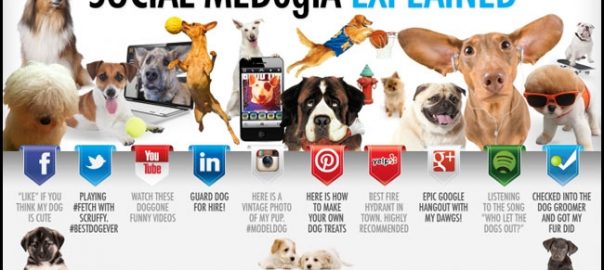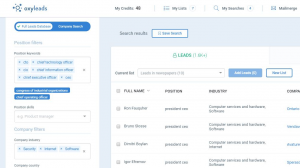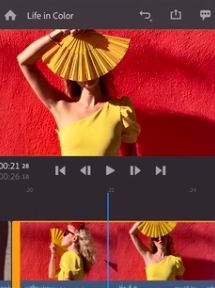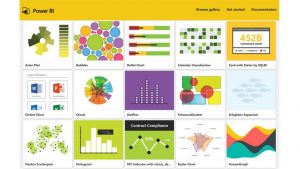
Social Media Doesn’t Produce Traffic If You Use A Spray And Pray Approach. It Responds To Finessed Targeting
Extracting maximum targeted traffic from social media calls for both – being socially active and having a strategic campaign with clear objectives.
Most often, the reasons Knowledge Commerce solopreneurs don’t see enough traffic and traction on social media may be either because they have no set plan – or they get caught in the melee instead of being able to control it.
No matter how small your business, or how obscure your niche, there is an audience out there on some social media platform that’s just right for you. You can extract the maximum traffic from social media if you aim at specific small targets, one by one, and learn how to lead and direct the ebb and flow of social conversations towards your messaging.
1. Understanding The Top Social Channels And Their Traffic Profiles
Before you target the social media channels for traffic, it helps to know which social channels will be generally more productive of traffic – and what the characteristics of their distinct audiences are. Each social channel has its own characteristics, and the audiences you will find on these social media also have their own nuances.
Further, irrespective of the channels they are on, there are some behavioral characteristics that social media users, in general, exhibit. It helps to know all this before you specifically target the audiences you want for your knowledge brand.
a. The Big Six Social Media Platforms That Matter Most
There are very many social media channels that have by now existed for years, like Twitter, YouTube, Facebook, Pinterest, Instagram and LinkedIn. Along the way, there are some big ones that have closed shop like Google Plus. The latest kids on the block are Tik Tok and Vero.
You are spoilt for choice, it would seem. But the thing to watch out for is this. While the established five or six social channels have clearly distinct audiences, and many targeted marketing approaches on them have been proved to work, the new ones are still evolving and a wee bit experimental.
If I had to hedge my bets on the social channels to try out first for my business, I would steer clear of the too new ones and stay with what I call the Big Six social media. Here is a bit more detail on each one …
A lot of research suggests that Twitter has at least 300 million users or more. Twitter, with its short messaging format, attracts highly engaged users who visit the channel at least three or four times a day. Apart from those who like to share quick updates on their work, leave a comment, retweet their peers’ work, and absorb happenings in the world, there are a lot of people who use Twitter as their opinion-airing channels.
It is believed that 63% of Twitter users are usually between 35 and 65 years old, and they are mostly males. One-third of Twitter users approximately are female. On Twitter, these are the kinds of content that work best: breaking news, bite-sized content, short quotes, trending topics, witty topics, or debated points of view. These days short videos also work well.
Facebook has nearly 2.5 billion monthly users, it is said. Therefore some part of your target audience is, for sure, on Facebook – because it is the largest social media channel in the world. But lately, the millennials are not too hot on Facebook, preferring other more sizzling new social channels. If your target audience is above the age of 30 years old, Facebook could be your No.#1 choice. Facebook usage seems even between males and females.
On Facebook, aside from making posts – or even publishing your full blog posts – you can engage your audiences by starting a Facebook Group. That gives you an opportunity to interactively target with more accuracy. People who are older are also less afraid to say what they feel, so any content that is interesting, engaging (or even somewhat radical) may pass muster on Facebook. You can also try out live streams and polls.
LinkedIn apparently has over 575 million users, of whom more than 260 million monthly are said to be “active users” i.e. engaging with the platform at a regular periodicity. LinkedIn initially started as a site where employees, companies, job seekers, and job-givers could exchange resumes and business-related information … but it has now morphed into more of a social media channel, encouraging more social posting, forming of special interest LinkedIn Groups and B2B and B2C interchanges.
The good part of LinkedIn is your ability to really target your audiences granularly. You can connect with people based on their occupations, levels or degrees of education and competence, current jobs, areas of interest, niche-sensitivities, and so on. There is a good mix of women and men on LinkedIn. The special advantage of it for business marketers is that people on LinkedIn are there for business socializing primarily.
YouTube
YouTube is probably the next most popular search engine in the world after Google, with more than 2 billion monthly users. Videos, instead of blog posts, seem to be the mantra for many marketers. They think – maybe rightly – that attention spans for reading have become jaded, and videos strain people less. If your brand could benefit from creating video tutorials, product reviews, instructional courses, or interviews, then YouTube would be right for you. But note that video content must be both instructional and bit entertaining too, or it may sound blah.
It is believed that almost 73% of US adults use YouTube a lot. Of these, the majority are 15 to 34 years olds. The skew between men and women is more or less even. Both long and short videos do well on YouTube. YouTube videos can be speeded up so that slow speakers don’t leave people tired with their rambling style of voiceovers. Many people, it appears, like watching instructional videos at 1.5 times the regular speed. Some marketers believe the demand for videos has grown because the market is saturated with blog posts. Others think if they have videos and embed these into their posts, the posts get indexed by Google faster. There are lots of reasons why YouTube is a marketer’s weapon, but I think, if your audience is less thrilled with reading text, then try YouTube videos instead.
Pinterest is the channel to choose if your audience is predominantly women. Pinterest has over 320 million monthly users, of which nearly 80% are female, with a heavy concentration of millennials. Pinterest users have a penchant for creative ideas, hobbies, DIY home projects, vacation ideas, and a smattering of business now and then. They like collecting ideas and pinning these to social, topic-based “Pinterest boards”.
A lot of the content here also includes vertical images – like infographics, or long lists of ideas, There are also a number of “how-to visualizations” like how to bake cakes, how to make your own carpentry shed, or how to deal with messy pets. The content is also less textual and more choc-a-bloc with images. People follow each other when their interests collide, or even just because they like your way of putting up your collection. If your business is related to lifestyle, fashion, decorating, or DIY, Pinterest should be foremost among your choices.
Instagram has become the “hip place” to be if your audience is wow-ed by celebrities and loves seeing great photography. It’s now become the channel where brands, influencers, small and big bloggers, business owners, and almost everyone wants to have a presence, and project his life and times with exquisite photography. Instagram has over 1 billion monthly users. If your target audience is mostly teens and young adults, you’ll invariably find them on Instagram devouring the images of their role models.
Although people who are slightly older than 40 years tend to use Instagram a little less, the skew of men to women is even. What distinguishes Instagram over another visually-oriented social media channel like Pinterest is the appreciation of highly aesthetic photography and images. Instagram is the world of fashion and all images that are upper-crust, while Pinterest would be the place for hobbyists and DIY people. Head-turning special image effects, unique and highly stylized images, lots of selfie-style videos, and lots of self-showcasing happens on Instagram. Even business visuals must tease and tantalize, or be the handiwork of a lot of image manipulation and special effects. If your target audience likes being seen as a consumer of elegance and out-of-the-box imagery, then Instagram would be a good choice of social media channels for your brand.
b. Subtle Difference In Audiences’ Behavior On Various Social Channels
I could write twenty large paragraphs to show you the way users of the various social media think and behave. Or I could just show you a very attractive and interesting couple of images that Avalaunch Media have created using cat owners and dog owners and their likely nuanced behavior on the different social media.
These visualizations are among the best I have seen to explain how people on the different social media are differentiated by their attitudes and what tack they may like to take. (These images are a tad old, though, for they still show Google Plus, but you can ignore that and the visualizations are still terrific.)
These images are aptly called “Social Meowdia Explained” and “Social Medogia Explained”. They try to imagine what a cat or dog owner would behave like on each of these social channels, to “fit in with the crowds there”. Remember one thing: it could be the same cat owner or dog owner behaving differently on the different social channels, depending on which channel he is on. Enjoy these!
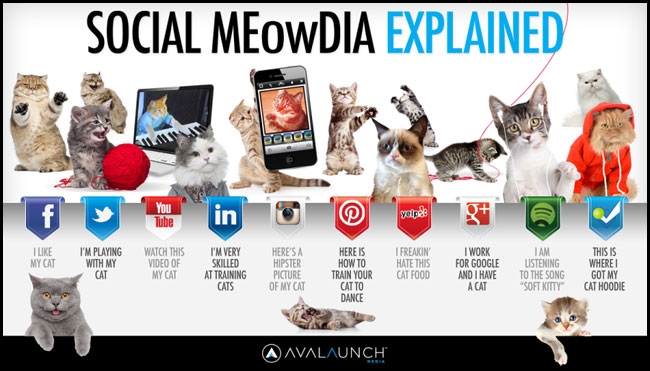
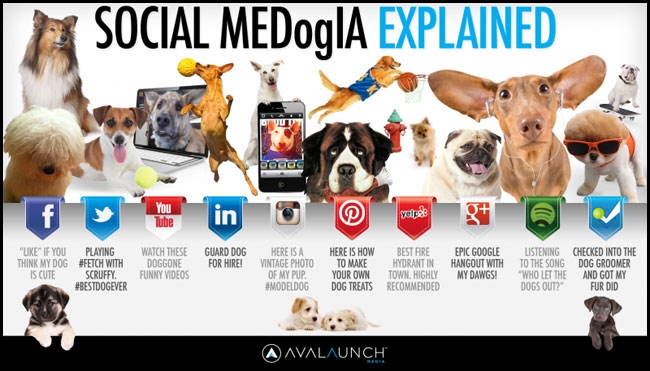
Image courtesy: Avalaunch Media
c. Separating The Different Engagement Levels Of Social Traffic
After you gauge the distinctive cultures of each of these social media and their typical inhabitants, it’s a good idea to zero in on the level of engagement that people generally exhibit on the social media – whichever social channels they belong to.
Some people like to watch from a distance and see what’s going on, some like to actively share and socialize, some others thirst for a debate to join in (or even sometimes come to pick a fight), and yet some others like to be stars who attract others and impress them.
According to SmartInsights, there can be 6 different types of social-citizens depending on their level and taste for engagement of different kinds.
- The No Shows (41%)– these are people least involved with social media, if at all; they also infrequently engage in online socializing.
- The Newcomers (15%) – passive users of a single social media network such as Facebook, primarily to enhance relationships that they have offline.
- The Onlookers (16%) – are active only in the sense that they watch others via social channels on a regular basis, but share almost no personal information.
- The Cliquers (6%) – active users of one network; they tend to be influential among their small group of friends and family.
- The Mix-n-Minglers (19%) – those who regularly share and interact with a diverse group of connections via diverse social media.
- The Sparks (3%) – most active and deeply engaged users of social media; will serve as enthusiastic online ambassadors for their favorite brands.
As a knowledge-marketer looking at the social channels as a traffic source, you can decide to target the social channels you prefer, and also target the kinds of engaged audiences you prefer from these channels. This is one of the biggest advantages you have in trying to get traffic from social media. The ability for granular targeting of traffic by engagement-readiness levels is a terrific plus-point.
2. Some Basics For Building Your Brand And Driving Traffic From Social Channels
It isn’t enough, of course, to merely be present on the social channels you desire. You have to consciously build your brand on these channels, and project the brand qualities you want people to be aware of.
There are some basic factors you have to be extremely careful about, because these reflect directly on your brand. You must convey the right brand credibility for you to be able to attract the kind of audiences you want.
Just as you want to choose your audiences with care, audiences would like to be choosy about the brands that best reflect the qualities they respond to.
a. Be Selective With Choosing Social Platforms And Posting Times
Not every social platform, however popular, is right for every brand. If, say, you want to maintain a very “official” presence, Twitter, LinkedIn and maybe Facebook Pages would be a great choice. If your brand is more involved with the arts or fashion, Instagram, Pinterest and YouTube (more visual social channels) may be right for you.
If your target audience is largely women, Pinterest is hands-down the winner. Pinterest is just overflowing with women audiences. If your brand authority is built on your smart thinking and sharp one-liners, you could use Twitter to broadcast your opinions on a host of topics related to your niche, while you also intermingle with other authoritative voices.
A good idea would be to frequent most of these big social channels for a bit, and see where you may have the best chances to give your brand a high polish, while also engaging in the type of conversation with audiences who like exchanging notes with a brand like yours. Social media selection has no hard and fast rules. It’s a listening-cum-intuition thing. It’s like knowing, at a party, which gathering of friends you are best likely to “vibe with” and gravitating towards them.
Post your updates when the channel audience is active. Every social channel has its own peak hours when it is flooded with people.
Twitter is invariably the haunt of the round-the-clock types, but if your audience is in the US, you must make sure you are tweeting your updates during the US waking hours – and not when the US is asleep and Indonesia is awake. Likewise, there are times of day researched to be the best times for posting social updates to the different social channels.
Many experts tend to give you their own research of best times. But as you become a more aware social user, you will know what timings get the best traffic for you from the social channels.
b. Make Your Profiles Across Channels “On Brand” And Consistent
The profile section of your accounts on these social channels are of paramount importance. When people come across any of your social updates they are tempted to see who you are, what you do, which site you own, and what values you stand for.
There are five great reasons to put in a lot of thought when you craft your social profiles …
- Your social media profiles are the first point of research for potential buyers.
- Your social media profile is what often gets you get discovered, if you’ve used the right hashtags
- Your social media profile showcases your credibility and your brand to your target audience.
- Your social media profile, from the way it’s written, can help differentiate you instantly from the competition.
- Your social media profile can be a conversation-starter with potential customers and peers.
Make your picture look genuine and authentic and credible. Look straight into the camera, with just a hint of sideways profile. This gives the best combination of sincerity-plus-confidence.
Make your bio crisp, and don’t be tempted to cram it with hashtags to the point of meaninglessness. Highlight your expertise, and provide links to your best website.
Give both your professional interests and a hint of your other interests – so you come through as a 360-degree human being. Look at the bios of the biggest social influencers in your niche. Your profile must sound like it could belong in that crowd.
c. Connect With Influencers More Than The Audiences
Many marketers don’t get this concept. On social media they try to woo their audiences. On the contrary, you have to woo the influencers who hold sway over the audiences you want.
One word from the influencers, recommending a visit to your site, will bring traffic in droves. Whereas, if you are targeting individuals with small peer-followings, you’ll get barely any traffic.
On social media, it’s all a game of “capturing the fort on the hilltop to capture the surrounding territory”. Go for the influencers. Warm them up with tweets and social updates applauding their latest books. Comment openly on their latest blog posts you loved. Retweet their tweets. Like their updates. Make it known to them that you are a raving fan. And then, when things look like they are going swimmingly well between you and the influencer, shoot an update to them asking for feedback on your site, your blog post or your brand.
They’ll reply if they feel you’ve become valuable as a fan – and if they just say the word, their gazillions of followers will visit your site too. Watch this magic, and you’ll get thoroughly convinced that the only real way to traffic from social media is via influencers.
3. How To Get The Most Traffic Out Of Social Channels With The Right Kinds Of Content
What kind of content you share on social media also has a direct bearing on the kinds and quantity of traffic you attract. How many sad brands have we seen posting inane or blah content, and expecting excited traffic to rush to their sites.
Using social media, as one expert put it, is exactly like using a cocktail party to showcase yourself. For a party, you’d go appropriately dressed to impress. You’d aim to mix with those who have the greatest power among others. You’d try to get noticed by being witty, or sensible or authentic – depending on the crowd, and what you aim to be seen as.
Most importantly, you’d want your words and behavior to communicate things about you, subliminally, beyond the literal things you say. It’s the absolute same with social media. It’s one big party, and what you say also says a lot about you. Here are some tips that you should keep in mind about your posting content.
a. Vary Your Types Of Shared Updates … Use Different Kinds Of Ideas
Share interesting content, share updates of old and new blog posts cyclically, and share the content of your blog and others’ blogs 50-50. Being seen as over-promoting yourself is a no-no. But at the same time, you do have to share updates of your own blog posts.
So, the best thing to do is to share some 50% of updates on your own blog posts, and about 50% of your updates should be of interesting blog posts from others in your niche.
Show that you are a niche-centric authority, and not a self-centric person. Share your old and new blog posts via cyclical social updates that air your entire library of blog posts on your site. And take a lot of care to see that every single update has the ability to project your brand at its best. Don’t share carelessly, just to push out a certain quantity of updates per day.
Try tactics such as asking questions, showcasing great quotes by great men and women, calling for participants for spot polls on interesting topics, engaging people with debate points, encouraging impromptu or scheduled social chats, injecting humor or cartoons to make your point … the ideas are endless. Be daring, be different, be innovative – but as you do all this also always be “on brand”.
b. Use A Lot Of Visual Support For Updates – And Be Careful With Hashtags
Visual content like images, videos, slide decks, and infographics have great traffic-pulling power. People don’t come to social media only to be serious about work. They like being entertained (which accounts for why these cat videos are so viral). Do use visuals with all your social updates, because chunks of pure text will just go unnoticed in crowded social streams.
Another very important thing: use the right hashtags with your social updates. It’s been researched that three hashtags is the minimum and maximum an update should have – did you know that?
It’s a good idea to make one hashtag the topic of your update, make another hashtag of your brand name, and make the third hashtag of your audience type (e.g. #contentmarketing #solohacksacademy #solopreneurs). That way anyone searching for content socially will either see what’s exclusive for him, or his topic of interest – and over time, you will also promote your brand as a hashtag.
Be extremely cautious about hashtags though. Because they tend to be single words they can mean something totally different when you think you’ve strung crucial words together beautifully … like when Susan Boyle wanted to promote her music album launch her hashtag went haywire … it was #susanalbumparty!
c. Let Every Social Update Have Some Call To Action
It’s the unspoken rule of all marketing communication – any kind of marketing communication – that a message must always be followed by a “call-to-action”. It’s the same for any social update. Give people your message, share a blog post, share a quote – but then tell people what you need them to do next.
What action would you need them to take? Visit your site? Click on a link that leads to a blog post? Sign up for something you’re offering? That’s why you also have to think before you create a social update because you have to ask yourself: “By putting out this update, what actions can I tease or please someone into taking?”
Even if all that your social update contains is a quote by some great person, it should be a quote, for instance, that underscores the point you are making in a blog post. Let’s take an example. Let’s say you are making a social update of a quote by Henry Ford. By all means put his quote in words, or in the picture, and add your call to action: “See how Henry Ford’s idea can help your business today” … and provide your link to your relevant blog post.
If you think of “calls-to-action” as intrinsic to every social update, you will be extremely careful to make the kind of updates that will bring the traffic in.
In Summary …
- Social media doesn’t produce traffic if you use a spray and pray approach. It responds to finessed targeting.
- Extract maximum traffic from social media by aiming at specific small targets. Direct the ebb and flow of social conversations towards your messages.
- Each social channel has its own characteristics, and the audiences you will find on these social media also have their own nuances.
- If I had to hedge my bets, I would steer clear of the too new channels and stay with what I call the Big Six social media – Twitter, Facebook, LinkedIn, YouTube, Pinterest, Instagram.
- People on the different social media are differentiated by their attitudes and what tack they may like to take. The same people on different social channels behave differently.
- On social media don’t try to woo your audiences. It’s far smarter to woo the influencers who hold sway over the audiences you want.
Digital & Social Articles on Business 2 Community
(53)
Report Post